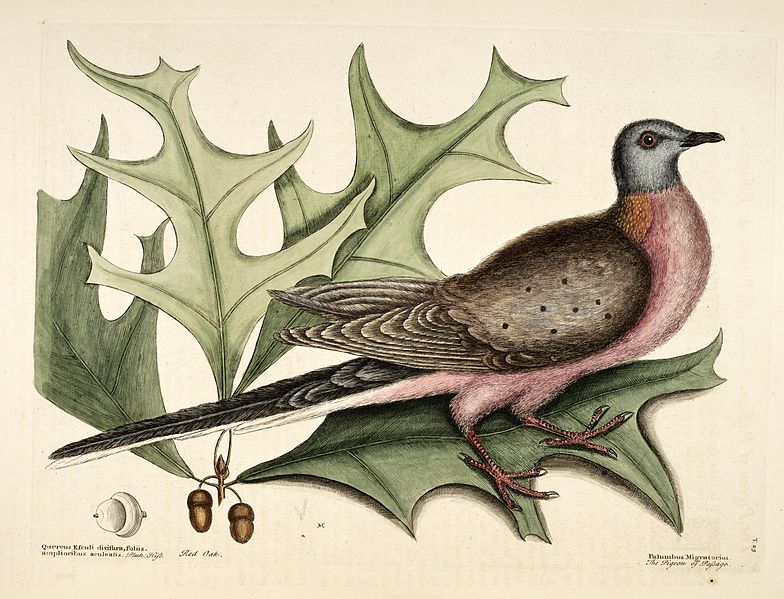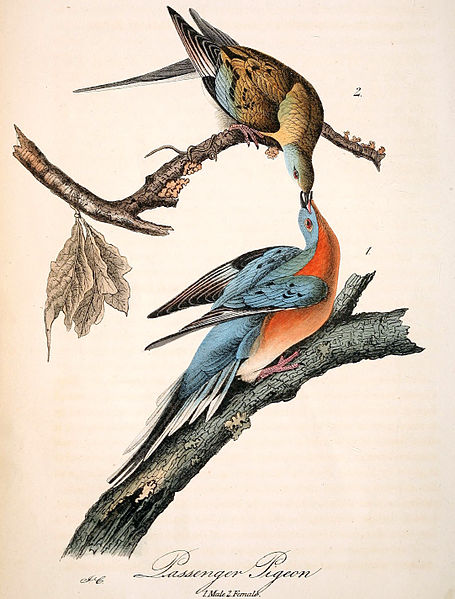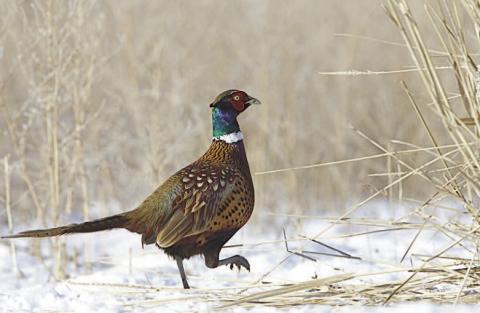
Greg Tinsley
Coming up now on four decades ago, I was once privileged to visually examine a passenger pigeon exhibit, the only piece that the private collector kept at his home. My breath often fogged the converse lens of the birds’ encasement. Several times I asserted that their taxidermist had clearly been inspired by the face of God.
The last of the living passengers were gone from Earth by the early 1900s. As a population, science suggests they were North America’s most successful birds during their time here. A sustained 5 billion animals at height, give or take. Such is a number relying upon pre-last-of-days’ estimates by great observers, historical figures of natural history, to include this edited favorite by the illustrator John J. Audubon in 1813:
[Without looking away from them,] I began to mark a dot for every flock that passed, as the birds poured on in countless multitudes. I found that 163 dots had been made in 21 minutes.
I traveled on beneath a sky that was literally filled with pigeons. The light of noonday was obscured as by an eclipse, the dung fell in spots, not unlike melting flakes of snow and the continued buzz of wings had a tendency to lull my senses. I cannot describe to you the extreme beauty of their aerial evolutions, when a hawk chanced to press upon the rear of the flock. At once, like a torrent, and with a noise like thunder, they rushed into a compact mass, pressing upon each other towards the center. In these almost solid masses, they darted forward in undulating and angular lines, descended and swept close over the earth with inconceivable velocity, mounted perpendicularly so as to resemble a vast column, wheeling and twisting within continued lines, which then resembled the coils of a gigantic serpent.
Audubon trekked 55 miles under those conditions before reached Louisville, Kentucky, writing –
The pigeons were still passing in undiminished numbers and continued to do so for three days in succession.

In appearance and activity, comparatively, these sleek avians were never much like the pigeons now associated with towns and cities. Englishmen probably called them wild pigeons even long after the French explorer’s compounding “passenger” was coined into the lexicon.
Visually, for me, passenger pigeons most closely resembled the modern mourning dove. They were discreet percentages larger with similarly counter-shaded plumages, though splashed with some additionally brighter pastels and irradiances.
Elite, world-class acrobatics aside, in calm conditions science suggests they possessed a top-end flight speed of 65 miles per hour. So passengers would have been 20-percent faster than any of the doves today. They would’ve made crossing teal appear to be jogging.
The Seneca Indians used the pragmatic jahgowa for passengers, which means “big bread.” Every predator in the bird’s mainly eastern North American range would have gladly eaten pigeons. And, so, finally connecting the dots, the passenger is the species that was the primary target for most all of the “bird-point” arrowheads ever collected from the soils of The Republic.
But all of the bird points conceivable could never have scratched them. One needed the most escalated human migration in history for such unbridled slaughter – with firearms, horses, mules, wagons, capture nets, kerosene lanterns, barrels, salt mines, ice works, railroads and boats. An industrialization dedicated to the country’s exponentially replicating campfires, kitchen tables and big-city restaurants.
Featuring nightshifts beneath roosting aggregates, one large commission house – among an incalculable number of those businesses big and small – employed 1,200 wild pigeon trappers in 1881. And with the near-wipeout blight of the American chestnut tree as its unprecedented contributor, the doomsday bomb for this extraordinary population was at once impossible to disarm.
At any scale, the lawless commercialization of wildlife is repulsive. The passenger pigeon debacle had that in universal excess, plus everything in between.
President Theodore Roosevelt beheld a corroborated sighting of passenger pigeons on May 18, 1907 from his cabin in Pine Knot, Virginia. Maybe a dozen birds – two or three times on the wing – that lit briefly on a dead tree. He saw them, some folks may proclaim, because they had been sent to him.
By 1910, the American Ornithologists’ Union was offering $90,000 (in today’s dollar) for the nest of a passenger pigeon. And of the iconic passenger, speaking on May 1947, the preeminent voice of wildlife science, Aldo Leopold, remarked:
Men still live who, in their youth, remember pigeons. Trees still live who, in their youth, were shaken by a living wind. But a decade hence only the oldest oaks will remember, and at long last only the hills will know.






























